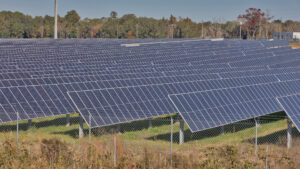By Mitch Perry, Florida Phoenix
Nearly 30,000 Floridians have installed solar power this year, bringing the number of installations to over 253,000 according to a new report.
The state as a whole has installed 3.1 gigawatts (GW) of solar-generation capacity through the first three quarters of this year, nearly matching the state’s record-setting amount of 3.2 GW installed last year. That’s the second most in the nation, ranking behind only Texas. (A gigawatt is equivalent to 1 billion watts.)
That information comes from the Solar Energy Industries Association (SEIA) and data analysis consultancy Wood Mackenzie’s U.S. Solar Market Insight Q4 2024 report.
The price of solar power has gone down by 43% over the past decade. That’s a major factor in why Florida has ramped up production of solar in recent years, said Stephen Smith, executive director of the Southern Alliance for Clean Energy (SACE).
“The technology price points are actually in the money compared to other generation technology, so it’s actually more cost effective to build a solar plus storage for a large utility than it is to build any other generation unit, when you look at the lifetime cost and the cost to get it up and get it operational quickly,” he said.
Nearly a decade ago, SACE and other clean energy advocates in Florida were critical of the state’s investor-owned utilities for their lack of investment in solar power. That’s changed dramatically, Smith said, praising in particular NextEra’s Energy’s Florida Power & Light, the state’s largest regulated utility, serving more than 12 million people.

FPL’s solar energy expansion is part of its “Real Zero” goal of eliminating carbon emissions from its power plant fleet — a plan that Smith calls one of “the most ambitious solar goals in the country.”
As the Phoenix first reported in 2022, the Real Zero decarbonization plan pledges to cut NextEra’s own carbon emissions in the regions it serves by 70% by 2025, compared with its 2005 baseline; 82% by 2030; 87% by 2035; 94% by 2040; and 100% by 2045. The company say it will do so by expanding solar-power generation to 90,000 megawatts, adding 50,000 megawatts of battery storage, maintaining nuclear power generation and converting 16,000 megawatts of natural gas units to run on green hydrogen.
“The cost of producing electricity from new solar is around $60/MWh compared to $70MWh for new natural gas,” said Dawn Shirreffs, Florida director for the Environmental Defense Fund. “As a result, we see NextEra/FPL is now very focused on solar and storage to diversify their portfolio and lower costs in Florida, but other utilities continue to propose new natural gas plants.”
‘No surprise’
“The growth of solar in Florida and across the nation is no surprise,” added Susan Glickman, vice president for policy and partnerships with the CLEO Institute, a climate nonprofit.
“Fossil fuel prices are climbing while the cost of solar has declined 43% in the last 10 years. Plus, using solar power reduces the climate pollution warming causing expensive unnatural disasters and extreme weather. Around 250,000 Floridians installed solar on their roofs in the latest reporting year. They will get to enjoy stability in their power bill while knowing they are protecting Florida’s natural environment.”
Florida receives 8% of its existing electricity portfolio from solar, according to the SEIA. That figure is expected to increase over the next decade, with the total proportion of renewable energy in Florida expected to reach 28% by 2032, primarily from the addition of new solar generation, according to a report published earlier this year by the Florida Public Service Commission.
The state relies on natural gas for 75% of its energy needs, a larger proportion than in any other state.
Florida is predicted to take over as the top-ranked residential solar state in 2028, according to the new SEIA report, although not all environmental advocates are convinced that is destined to occur.
“If we’re talking about the cumulative number of households with solar, it’s possible but we’ll need a major uptick in installation to pass California,” Shirreffs said. California receives 31% of its energy portfolio from solar power.



